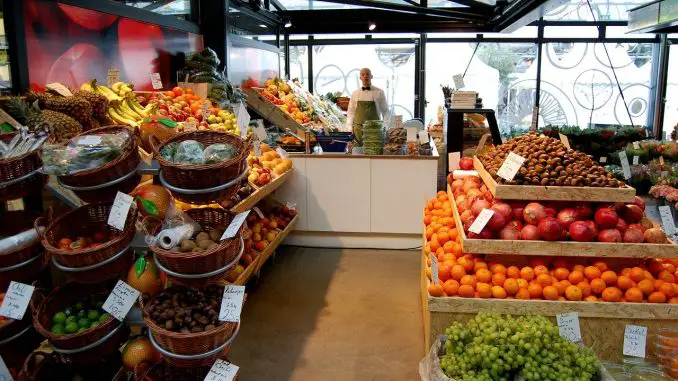
1.Bananas
Bananas have a high protein content and are the most popular fruit in many countries. As many as 90 percent of all bananas grown are transported long distances from Latin America and Africa, leading to high carbon dioxide emissions. Although bananas grow only naturally in the tropics and South Asia, it is one of the most consumed goods worldwide.
The banana’s thick peel means that large quantities of pesticides are required to prevent insects from eating the fruit before it is ripe. These toxins and chemicals largely avoid you as a consumer by scaling the banana. For the workers at the banana plantation, it is more difficult to escape the penalties.
Although organic bananas can be seen as a better alternative, there is one drawback: the plastic bag that surrounds them. Today, the plastic bag with eco-stamp is what separates the eco banana from the regular banana. It would be best to completely remove the banana, but if it is difficult, choose the organic variety.
2.Coffee
A big part of all coffee sold comes from Brazil. There, the biggest health problem is pesticide damage. This type of toxin is forbidden to use in most European countries and thus it is obvious why coffee places on this list.
The toxins used on coffee farms affect both the people living and working there, but it also has a negative impact on wildlife in the area. The chemical paraquat gives life-threatening damage to both animals and humans, while the poison in endosulfan mainly affects fish birds and bees.
When a new coffee farm is to be planted, it is often necessary to first cut down large quantities of forest. The deforestation of the forest causes the soil to be destroyed during the tropical rains. In addition, the water spreads the toxic chemicals into the soil and leads them further into the waterways.
3.Chocolate
This lovely product is appreciated by most, but is not always a good choice from an environmental point of view. Namely, chocolate contains two products that have a negative impact on the climate; palm oil and of course cocoa.
The rain forests in Malaysia and Indonesia have been destroyed in favor of palm oil production. The oil palms are planted in peatland, which upon contact with oxygen generates large amounts of carbon dioxide. Forests and peatland also give rise to fires that are difficult to control.
The problems in cultivating cocoa fruit are largely similar to the cultivation of oil palms. Large amounts of rainforest have been degraded in order for the cocoa plantations to grow more land. Only 7 percent of the large rainforest in eastern Brazil remains. When the rain forest burns down, large amounts of carbon dioxide are also released, which contributes to the greenhouse effect.
4.Palm Oil
Palm oil is not only found in chocolate, but also in margarine, crispbread, chips and broth cubes, for example. Many times palm oil is not written as an ingredient in the table of contents but is found under the collective name vegetable oil. This makes it difficult for the consumer to know what the product actually contains.
The oil is usually used as solid food grease in food products, but also make-up and cleaning products. Margarine, which often contains rapeseed oil, is usually mixed with palm oil to obtain a more firm consistency. The problem is that conventional palm oil production affects both nature, environment and people.
Forests on the islands of Borneo and Sumatra have resulted in the destruction of 90 percent of the orangutan’s natural habitat. Now the orangutan is one of many endangered species as a result of palm oil production. As the palm trees are grown in countries where the population is very poor, child labor often occurs because production requirements are high.
5.Meat
The debate about whether or not meat consumption has been going on for a long time. It is a fact that meat production has a negative impact on the climate. The worst is beef that leads to 20 kilos of carbon dioxide per kilogram of carcass weight. If you buy beef from Brazil, carbon dioxide emissions increase significantly more because of the long transport distance.
Meat production also leads to the release of methane gas produced in the stomach of animals like ruminants. Fertilization of arable land leads to emissions of nitrous oxide, which together with the methane gas accounts for the greatest climate impact caused by meat production. Therefore, chicken meat accounts for a smaller amount of emissions compared to beef and lamb. The best is if you have access to game meat, which has the least impact on the climate.
During the past two years, the discussion on antibiotic use in meat production has also reached the flyers. What effects does the antibiotic have on people who eat meat? Some countries have are strict rules regarding antibiotic use and animal husbandry, but imported meat often contains large amounts of antibiotic residues.
Last, but not least – don’t buy more food than you consume. As a consumer, you have the opportunity to change the development of throwing away food – but also the grocery stores have a great responsibility.
Much of the sorting is done already in the grocery store, since they are not allowed to sell products that have passed the best-before date. Some stores have now chosen to donate the expired food to the homeless and others in need. The other stores throw the food in containers, even though the goods are fully edible.
The handling of foodstuffs has led to grassroots movements such as dumpster diving, which means that the food that is thrown in the containers is retrieved. If it is illegal to take food from unlocked containers is treated on a case by case basis, but avoid containers that are in enclosed areas. Several grocery stores also pour detergents and the like into the containers to make the food inedible.
Leave a Reply